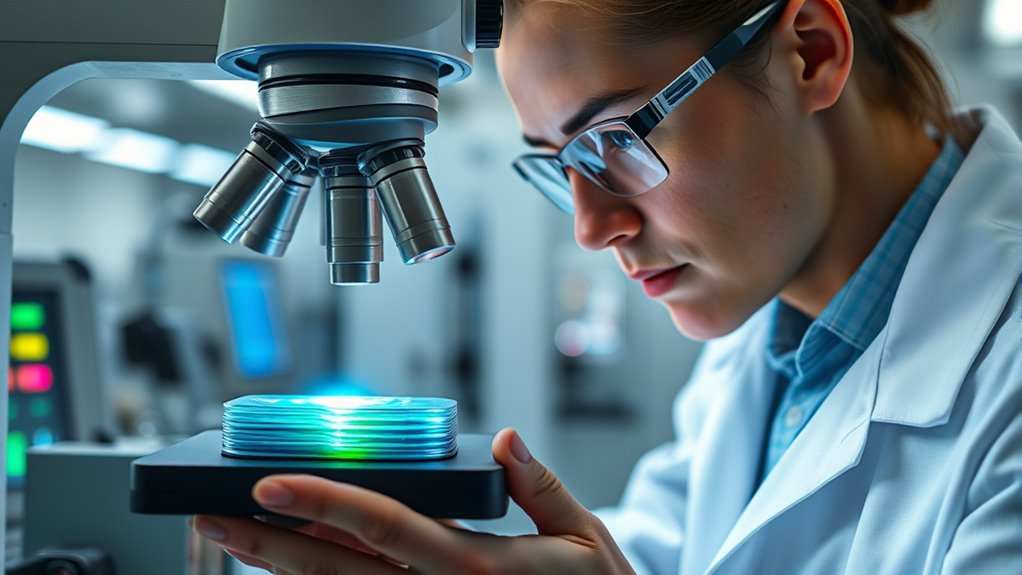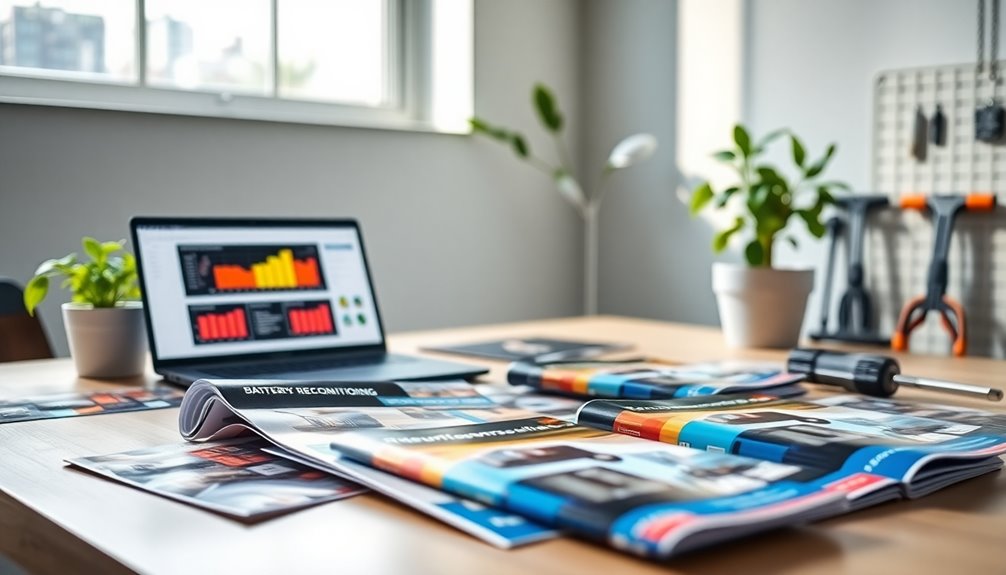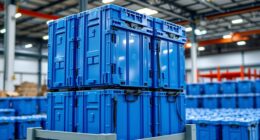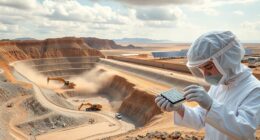Cobalt-free cathodes could be a game changer by addressing supply chain issues and reducing environmental harm tied to traditional cobalt use. They utilize more abundant, eco-friendly materials, making supply more stable and sustainable. However, some challenge their current performance, like energy density and lifespan. While promising, it’s unclear if these advancements can fully match traditional cathodes yet. To better understand whether this shift is hype or real potential, explore the details ahead.
Key Takeaways
- Cobalt-free cathodes reduce supply chain risks and environmental impact, offering a sustainable alternative to traditional cobalt-based batteries.
- Technical challenges like lower energy density and shorter lifespan currently limit widespread adoption of cobalt-free formulations.
- Continuous R&D aims to enhance performance, potentially transforming cobalt-free cathodes into viable, scalable solutions.
- Industry debate persists on whether cobalt-free cathodes are a revolutionary shift or overhyped technology.
- Investors should monitor technological advancements and market readiness to assess the true potential of cobalt-free cathodes.

As the demand for safer and more sustainable batteries grows, researchers are increasingly turning to cobalt-free cathodes as a promising solution. These alternatives aim to address important issues associated with traditional cathode materials, particularly supply chain challenges and environmental impact. Cobalt, a critical component in many lithium-ion batteries, faces mounting scrutiny due to its limited and ethically problematic sources. The supply chain challenges are clear: cobalt is mainly mined in regions with political instability and human rights concerns, which can lead to supply disruptions and price volatility. This makes reliance on cobalt risky for manufacturers seeking stable, scalable battery production. By shifting toward cobalt-free cathodes, you can potentially reduce dependence on these uncertain sources, creating a more resilient supply chain. This move also aligns with growing consumer and regulatory demands for ethically sourced materials.
Beyond supply issues, environmental impact weighs heavily in the shift toward cobalt-free cathodes. Cobalt mining is notorious for its environmental footprint, often involving destructive mining practices that harm ecosystems and local communities. The extraction process consumes significant energy, generates waste, and can lead to soil and water contamination. As someone invested in sustainable energy solutions, you recognize that reducing reliance on cobalt could notably lessen the environmental burden of battery manufacturing. Cobalt-free cathodes typically utilize more abundant and less environmentally damaging materials, such as nickel, manganese, or iron. These materials are often easier to source and process, translating into a smaller carbon footprint for battery production. This is especially relevant as governments and companies push for greener, more responsible supply chains that minimize environmental degradation. Additionally, advancements in material science could further improve the performance of cobalt-free cathodes, making them more viable for high-demand applications.
However, whether cobalt-free cathodes are truly a game changer or just hype remains a topic of debate. While they promise to mitigate supply chain risks and environmental concerns, technical challenges persist. Some cobalt-free formulations may offer lower energy density or shorter lifespan compared to traditional cathodes, raising questions about their long-term viability in high-performance applications. As an investor or industry professional, you must weigh these trade-offs carefully. Innovations are ongoing, and advancements in materials science could soon bridge these gaps, making cobalt-free options more competitive. But for now, it’s essential to think about whether the benefits of reduced supply chain vulnerabilities and environmental impact outweigh potential compromises in performance.
Frequently Asked Questions
What Are the Long-Term Environmental Impacts of Cobalt-Free Cathodes?
You might think cobalt-free cathodes reduce environmental harm, but you should consider the long-term impacts. Recycling challenges remain, as new materials can be harder to recover efficiently. While they lower the ecological footprint compared to traditional cathodes, their production and disposal still pose environmental concerns. You’ll need ongoing innovation and regulation to guarantee these batteries truly benefit the planet over their lifecycle.
How Do Cobalt-Free Cathodes Compare in Cost to Traditional Ones?
You’re curious about how cobalt-free cathodes compare in cost to traditional ones. Generally, the cost comparison reveals that cobalt-free cathodes often have higher production costs initially due to newer materials and manufacturing processes. However, as technology advances and economies of scale kick in, these costs are expected to decrease. This shift could make cobalt-free cathodes more economically viable, potentially offering long-term savings and reducing reliance on expensive cobalt.
Are Cobalt-Free Cathodes Compatible With Existing Battery Manufacturing Processes?
Imagine your battery manufacturing process as a finely tuned orchestra. Cobalt-free cathodes can harmonize with your existing process, but it’s essential to assess manufacturing compatibility and process integration carefully. While many innovations aim to fit seamlessly, some adjustments might be needed for perfect synergy. You’ll want to evaluate whether these new cathodes can be integrated smoothly, ensuring the progression enhances efficiency without disrupting your well-practiced rhythm.
What Are the Potential Supply Chain Challenges for Cobalt-Free Materials?
You’ll face supply chain disruptions and material sourcing challenges when developing cobalt-free cathodes. Securing reliable sources for alternative materials can be tough, especially if demand spikes or new suppliers struggle to meet quality standards. You need to navigate potential bottlenecks, guarantee consistent quality, and establish diversified sourcing strategies to prevent interruptions. Addressing these supply chain issues early helps you maintain production stability and accelerate adoption of cobalt-free battery technologies.
How Quickly Can Cobalt-Free Cathodes Be Scaled for Mass Production?
You can expect scaling timelines for cobalt-free cathodes to vary, depending on manufacturing hurdles and technological advancements. While some companies aim for mass production within a few years, supply chain readiness and process optimization may extend timelines. Overcoming manufacturing hurdles, like ensuring consistent quality and cost-effectiveness, is vital. With ongoing innovation, you might see faster adoption, but realistically, widespread scaling will likely take several years to fully realize.
Conclusion
As you weigh the hype around cobalt-free cathodes, remember they’re standing at the crossroads of innovation and uncertainty. Like a rollercoaster, the journey promises exciting highs but also unpredictable dips. While they could revolutionize batteries and reduce ethical concerns, it’s wise to stay cautious and watch how technology and market demand unfold. Don’t jump in without your seatbelt—this ride might just redefine the future of energy storage, or it could be a wild swing worth waiting for.










